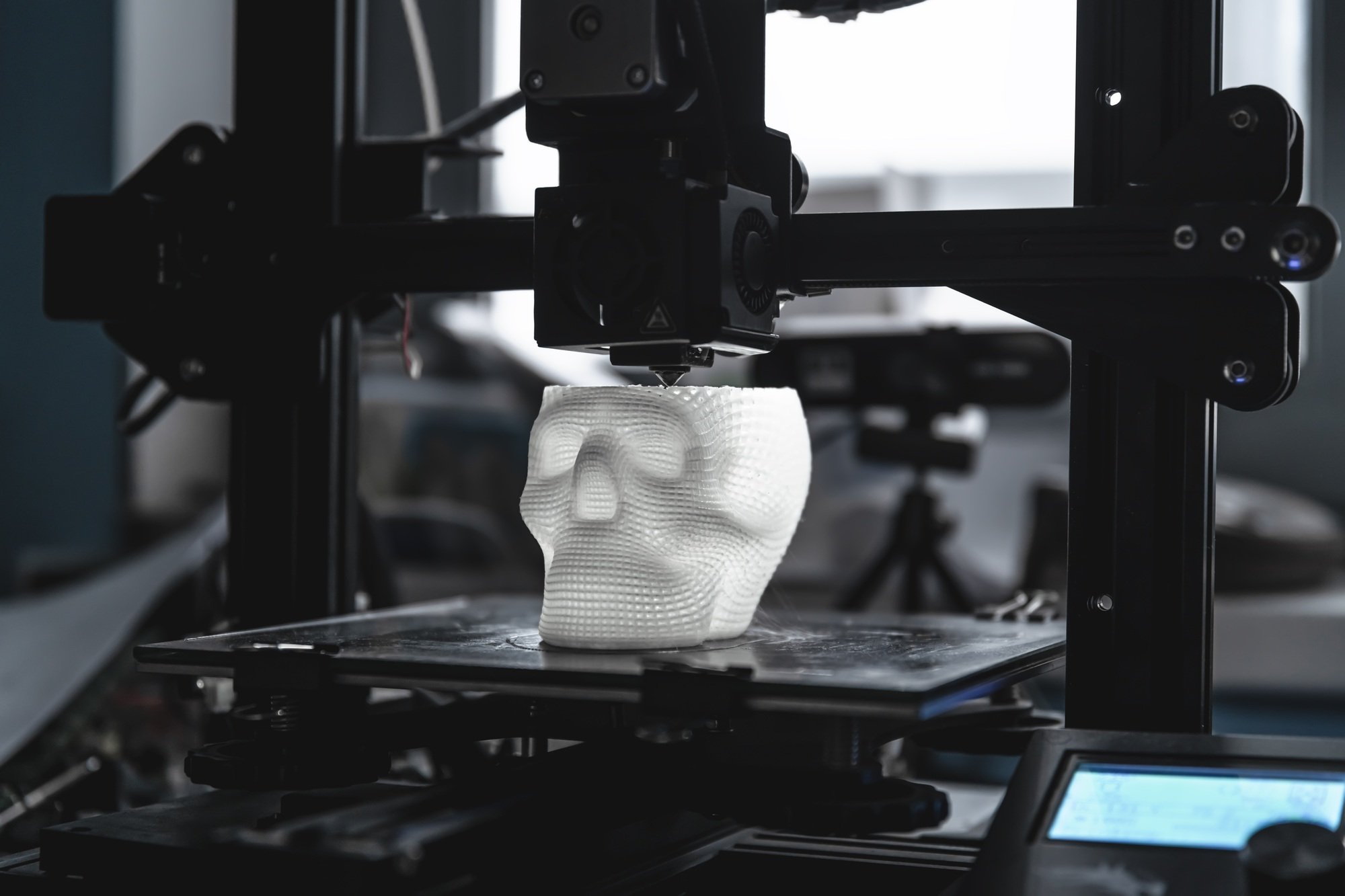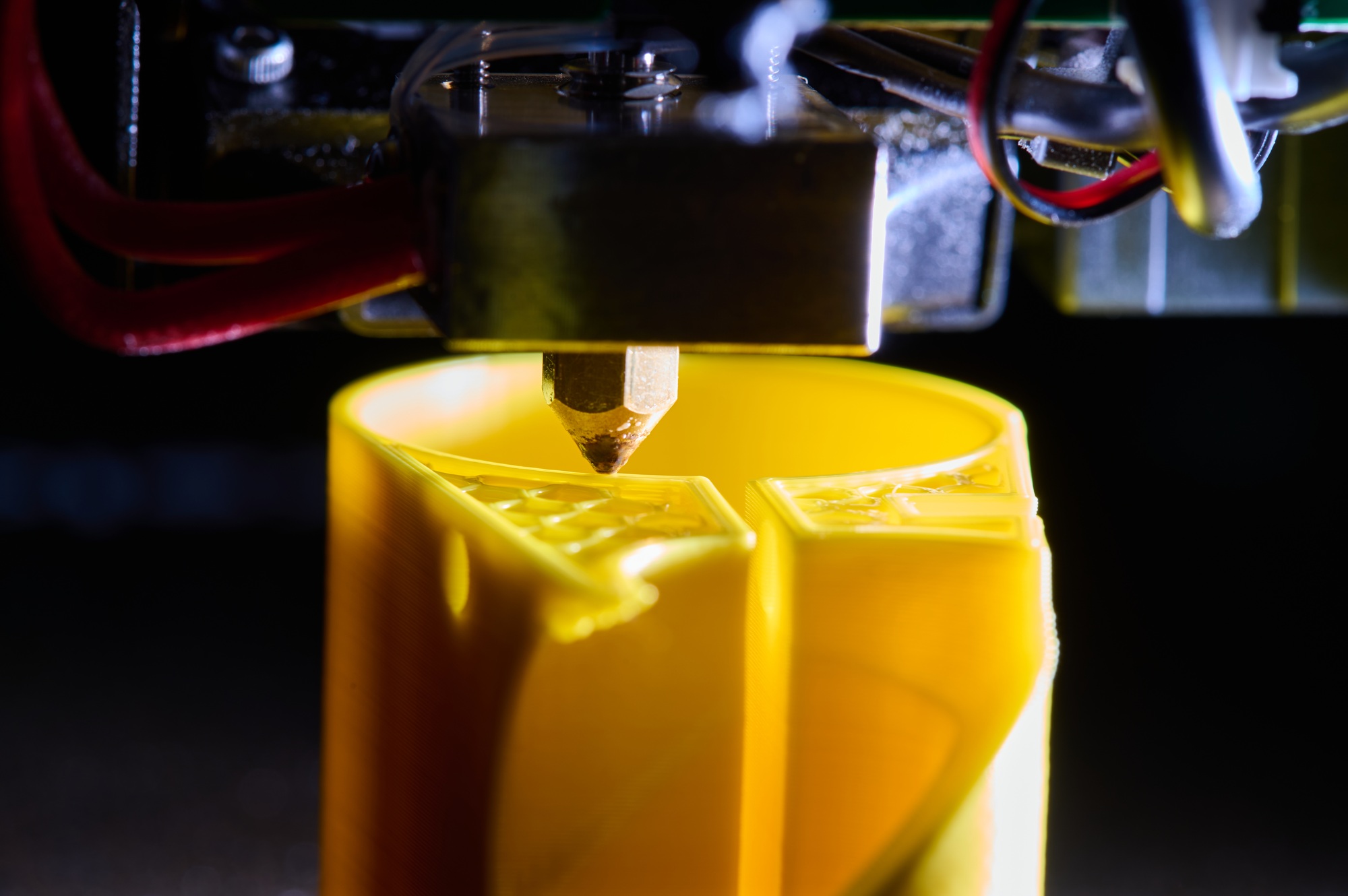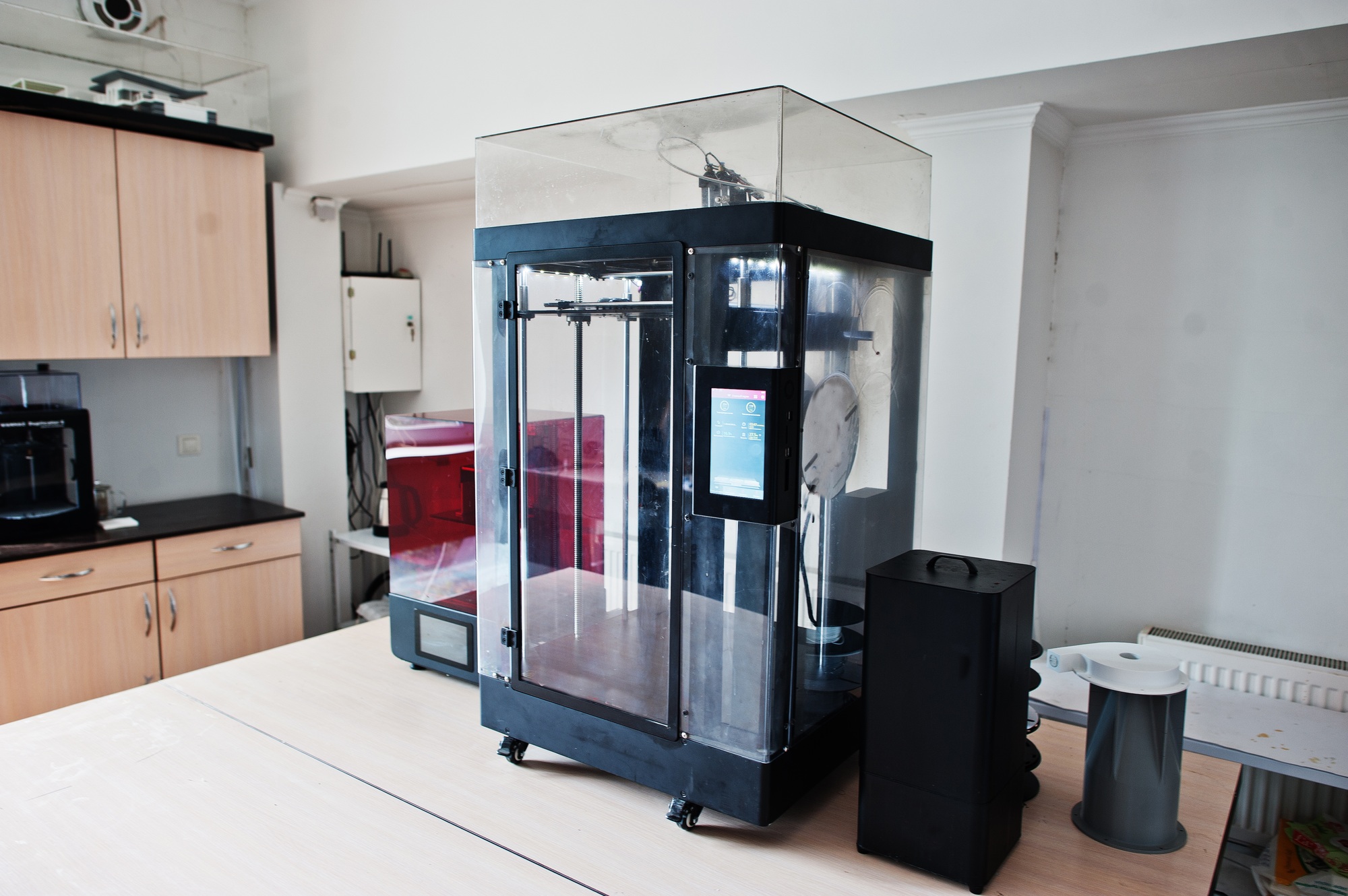Key Takeaways

- Importance of a Business Plan: A well-structured business plan is essential to outline your vision, attract investors, and navigate challenges in the 3D printing industry.
- Key Components to Include: Your business plan should feature an executive summary, market analysis, organizational structure, service offerings, marketing strategy, financial projections, and funding requests.
- Market Potential: The 3D printing market is rapidly expanding, projected to reach USD 135.4 billion by 2033, presenting significant opportunities for innovative startups.
- Target Audience Identification: Defining your target audience across various industries—such as aerospace, automotive, healthcare, and consumer products—will tailor your services and enhance marketing strategies.
- Diverse Revenue Streams: Explore multiple income avenues, including custom design services, prototyping, direct sales, and licensing to maximize profitability.
- Effective Marketing Strategies: Utilize online marketing, networking, and partnerships to build brand awareness and attract customers in the competitive 3D printing market.
Are you ready to dive into the world of 3D printing? This innovative technology has transformed industries, from manufacturing to healthcare, and it’s opening up exciting opportunities for entrepreneurs. Crafting a solid business plan is essential to harnessing the full potential of 3D printing and turning your ideas into reality.
In this article, you’ll discover the key components of a successful 3D printing business plan. Whether you’re a seasoned entrepreneur or just starting out, understanding the market landscape and your unique value proposition will set you on the path to success. Get ready to explore how to create a plan that not only outlines your goals but also attracts investors and guides your business toward growth.
Understanding 3D Printing Business Plans

A solid business plan serves as a roadmap for your 3D printing venture. It outlines your business goals and strategies, ensuring clarity and direction for your startup.
Importance of a Business Plan
A business plan defines your vision, attracts investors, and lays the groundwork for your small business. It clarifies your target market and competitive advantages, allowing you to effectively communicate your objectives. A strong plan helps you anticipate challenges, manage risks, and set financial benchmarks. By detailing your operational plans and marketing strategies, you position your startup for sustainable growth in the competitive landscape of 3D printing.
Key Components of a Business Plan
- Executive Summary: Summarizes your business concept, market analysis, and financial projections.
- Company Description: Outlines your business structure, mission statement, and unique selling points.
- Market Analysis: Analyzes industry trends, target audience, and competitors.
- Organization and Management: Describes your team’s structure and leadership roles.
- Service or Product Line: Details the 3D printing services or products you offer and their benefits.
- Marketing and Sales Strategy: Specifies how you plan to attract and retain customers.
- Funding Request: If needed, outlines your funding requirements and plans for usage.
- Financial Projections: Provides revenue forecasts, profit margins, and cash flow analysis.
- Appendix: Includes supporting documents, resumes, and permits that validate your business model.
These components collectively create a comprehensive blueprint to help you start a business in the innovative world of 3D printing.
Market Analysis for 3D Printing

Understanding the market landscape for 3D printing is essential as you develop your business plan. The 3D printing industry is rapidly evolving, offering significant opportunities for small businesses to innovate and grow.
Industry Overview
The 3D printing market, also known as additive manufacturing, is projected to reach USD 135.4 billion by 2033, a notable increase from USD 19.8 billion in 2023. This growth reflects a Compound Annual Growth Rate (CAGR) of 21.2% from 2024 to 2033. Key factors driving this market include the ability to efficiently produce complex and customized products, which benefits sectors like aerospace, automotive, and healthcare. Significant advantages such as rapid prototyping, reduced manufacturing costs, and the ability to create lightweight structures enhance your small business’s competitive edge.
Target Audience and Segmentation
Identifying your target audience is crucial when you start a business in the 3D printing sector. Key customer segments include:
- Aerospace Industry: Companies seeking lightweight and durable components.
- Automotive Industry: Firms looking for rapid prototyping solutions and customized parts.
- Healthcare Sector: Organizations requiring personalized medical devices and prosthetics.
- Consumer Products: Businesses needing unique, made-to-order items.
Understanding these segments allows you to tailor your services effectively and refine your marketing strategies. Establishing strong connections with these audiences will enhance your business’s growth potential in the thriving 3D printing market.
Financial Projections and Funding

Developing a strong financial projection is essential for your 3D printing business plan. It sets the foundation for your expected growth and helps secure necessary funding.
Initial Startup Costs
Identify your initial startup costs to ensure financial preparedness. You should consider expenses such as:
- 3D Printer Costs: Factor in high-quality printers that meet your production needs.
- Filament and Materials: Include various materials like plastics, metals, and resins.
- Design Software: Budget for design software subscriptions or purchases.
- Workspace Setup: Calculate costs for renting or purchasing a suitable workspace.
- Operational Costs: Anticipate utilities, labor, and marketing expenses.
Overall, these startup costs can range from thousands to tens of thousands of dollars depending on your business scale.
Revenue Streams and Pricing Models
Diverse revenue streams enhance your 3D printing business profitability. You can generate income through:
- Custom Product Design Services: Offer tailored design solutions for clients across various industries.
- Prototyping Services: Provide rapid prototyping to startups and established businesses.
- Direct Sales: Sell finished products directly to consumers or through e-commerce platforms.
- Licensing: License your designs or technology to other businesses.
Establishing clear pricing models is crucial. Use competitive analysis to set pricing for your services and products. Consider fixed prices for standard items and customized pricing for unique projects.
Marketing Strategies for 3D Printing Businesses

Effective marketing strategies are vital for a successful 3D printing small business. Leveraging these techniques can help you reach potential customers and establish a strong market presence.
Online Marketing Techniques
Utilize online marketing to enhance visibility and attract customers. Focus on:
- Search Engine Optimization (SEO): Optimize your website content with relevant keywords related to 3D printing. This approach increases organic traffic and enhances your search rankings.
- Social Media Engagement: Use platforms like Instagram, Facebook, and LinkedIn to showcase your work. Share images and videos of your 3D printed products to engage your audience and encourage shares.
- Email Marketing: Build an email list of interested customers and send regular newsletters featuring product updates, special offers, and educational content about 3D printing.
- Pay-Per-Click Advertising (PPC): Consider using Google Ads or social media ads to target specific demographics. This strategy can drive immediate traffic to your website and generate leads.
Networking and Partnerships
Networking and strategic partnerships amplify your reach in the 3D printing market. Focus on:
- Industry Events: Attend trade shows and conferences to connect with other professionals and potential customers. Building personal connections can lead to collaborative opportunities.
- Local Business Alliances: Partner with local businesses in related fields, such as design or engineering firms. These alliances can generate referrals and shared projects.
- Online Communities: Join forums and online groups focused on 3D printing. Engaging with these communities can provide insights and foster potential collaborations.
- Educational Institutions: Establish relationships with universities or technical schools. They may require 3D printing services for projects, providing a steady stream of work for your small business.
Incorporating these marketing strategies into your business plan will strengthen your market position and attract a wider customer base, critical for sustainable growth.
Operational Considerations

Operational considerations play a vital role in the success of your 3D printing business plan. Focusing on effective equipment choices and supply chain management strategies enhances efficiency and profitability.
Equipment and Technology
Select printers based on your target market’s needs. Fused Deposition Modeling (FDM), Stereolithography (SLA), and Selective Laser Sintering (SLS) represent different printing technologies that cater to various applications. FDM is cost-effective and suitable for prototyping, while SLA offers high detail for intricate designs. SLS enables the production of robust parts from powders.
Choose materials that align with your service offerings. Common materials include thermoplastics, resins, and metal powders. Assess their properties—strength, flexibility, and heat resistance—to ensure they meet customer specifications. Updating your equipment as technology advances can significantly increase output quality and expand your capabilities.
Supply Chain Management
Establish a reliable supply chain to source raw materials consistently. Form relationships with multiple suppliers to prevent delays in production and manage costs effectively. Implement inventory management systems to track materials, ensuring you maintain sufficient stock without overextending your budget.
Prioritize logistics strategies that facilitate timely delivery of finished products. Explore options like local shipping services or partnerships with distribution companies to enhance order fulfillment. Implementing efficient supply chain practices contributes to overall customer satisfaction by meeting delivery deadlines and maintaining product quality.
Conclusion

Embracing the 3D printing revolution can be a game-changer for your entrepreneurial journey. A well-crafted business plan not only clarifies your vision but also positions you to attract investors and navigate the competitive landscape. By understanding market dynamics and customer segments, you can tailor your offerings to meet specific needs.
Incorporating effective marketing strategies and operational efficiencies will further strengthen your business foundation. As you move forward, remember that adaptability and innovation are key. With the right approach and a solid plan, you’re well on your way to thriving in the exciting world of 3D printing.
Frequently Asked Questions

What is 3D printing, and how does it impact industries?
3D printing, also known as additive manufacturing, creates three-dimensional objects from digital files. It significantly impacts industries like aerospace, automotive, and healthcare by allowing the production of complex, customized products efficiently. This technology reduces waste and costs while enabling innovation in product design.
Why is a business plan important for a 3D printing startup?
A business plan serves as a roadmap for your 3D printing startup, outlining your goals, strategies, and target markets. It helps communicate your vision to potential investors and stakeholders, manages risks, and establishes financial benchmarks essential for sustainable growth in a competitive environment.
What are the key components of a successful 3D printing business plan?
The key components include an executive summary, company description, market analysis, organization and management structure, service or product line, marketing and sales strategy, funding request, financial projections, and an appendix with supporting documents. Each section ensures clarity and direction.
How can I analyze the market for my 3D printing business?
Conduct market analysis by researching industry trends, customer segments, and competitors. Identify growth projections—like the 3D printing market expecting USD 135.4 billion by 2033—and target sectors such as aerospace and healthcare. Understanding market demands will help refine services and marketing strategies.
What types of revenue streams should a 3D printing business consider?
Consider diverse revenue streams such as custom product design, prototyping, direct sales, and licensing. Offering various services ensures sustainable income and enhances profitability. Clear pricing models based on competitive analysis are essential for success.
What marketing strategies are effective for a 3D printing business?
Effective marketing strategies include Search Engine Optimization (SEO), social media engagement, email marketing, and Pay-Per-Click (PPC) advertising. Networking and forming partnerships through industry events and local alliances can also amplify market reach and customer visibility.
What operational considerations are vital for a 3D printing business?
Choose equipment that aligns with your target market’s needs, focusing on technologies like FDM, SLA, and SLS. Strong supply chain management is crucial, so build relationships with multiple suppliers and implement robust inventory systems to maintain product quality and timely delivery.
Image Via Envato



